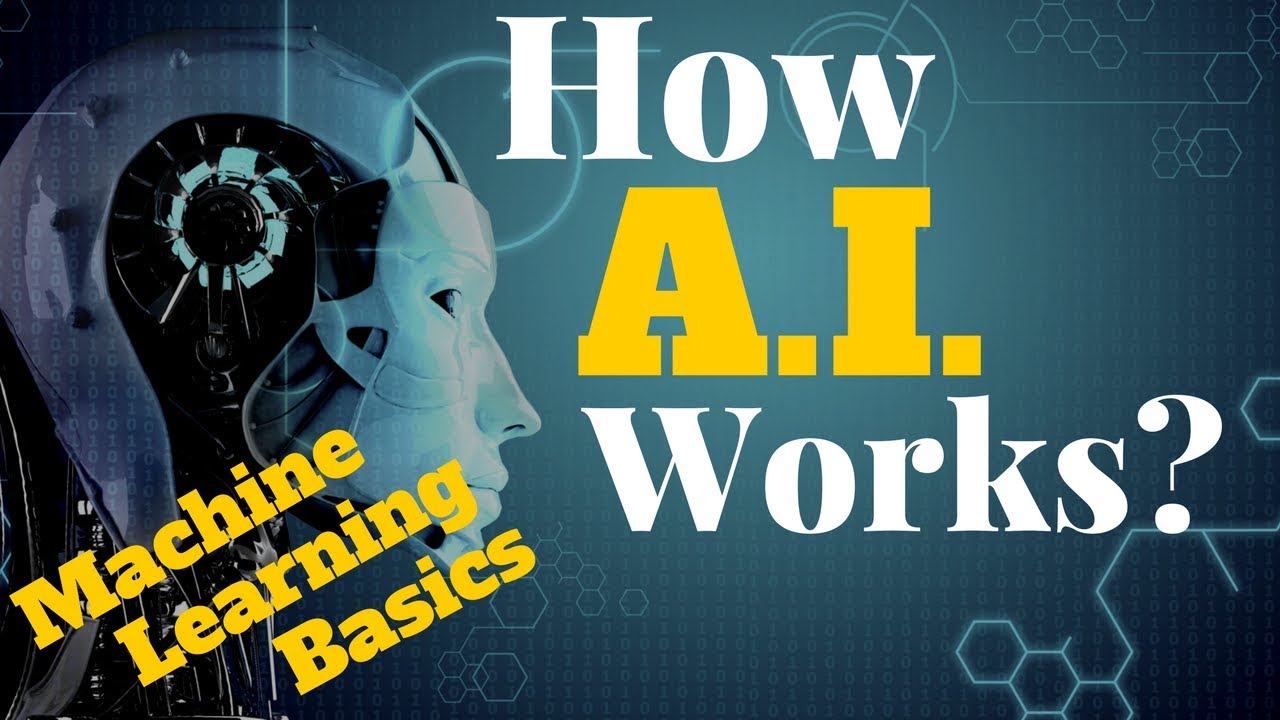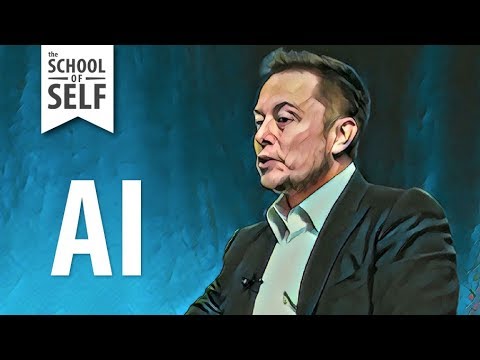Entiversal
Artificial Intelligence and Machine Learning are such a buzzwords, but what is the difference between them? How Artificial Intelligence works? What is Machine Learning and what does it do? What are the ideas behind Machine Learning Neural Networks and how Deep Learning functions? I am sharing with you answers on all of these questions on very beginner and simple to understand level, talking about what are neurons in machine learning, what do they actually do? Simple Machine Learning algorithms and showing you visually a short example of simple Linear Regression with Machine Learning Python script, explaining what happens on every step, different trade-offs and interesting facts. Come with me into the world of Machine Learning and Artificial Intelligence, it is exciting!
If you value my content, you can SUPPORT ME on: https://www.patreon.com/entiversal. Get amazing REWARDS(my code, design & much more) & help me create more!
Study Machine Learning. The Best Artificial Intelligence and ML Books on Amazon:
Machine Learning for Absolute Beginners: A Plain English Introduction:
US – http://amzn.to/2IADOYF
UK – http://amzn.to/2G2pYjs
Hands-On Machine Learning with Scikit-Learn and TensorFlow: Concepts, Tools, and Techniques to Build Intelligent Systems:
US – http://amzn.to/2FNRL7V
UK – http://amzn.to/2IzZjZN
Learning From Data:
US – http://amzn.to/2GGxZZe
UK – http://amzn.to/2IBpXBp
SUBSCRIBE FOR MY PODCASTS on your favorite platform! (All links on Anchor [Spotify, iTunes, Google, Pocket Casts, Stitcher & more]; SoundCloud):
https://anchor.fm/entiversal
SPOTIFY: https://open.spotify.com/show/7ensEidwWRlQGERdwJyIdM
ITUNES: https://itunes.apple.com/us/podcast/entiversal/id1361255782
GOOGLE PLAY: https://www.google.com/podcasts?feed=aHR0cHM6Ly9hbmNob3IuZm0vcy8yZTgyNmJjL3BvZGNhc3QvcnNz
STITCHER: https://www.stitcher.com/podcast/entiversal
Entiversal is the sanctuary of Music, Art, Science, Technology, Investing, Entrepreneurship Lifestyle, Health, Movies and Cinema & Sport.
Our Mission: Inspire Creativity, Give Knowledge, Quality Entertainment, Drive Success.
Are you UNIVERSAL? Subscribe for more: https://www.youtube.com/channel/UCZ1MzCid7U4386emJyauhXw?sub_confirmation=1
FOLLOW US:
PATREON: https://www.patreon.com/entiversal
FACEBOOK: https://www.facebook.com/Entiversal.M…
INSTAGRAM: https://www.instagram.com/entiversal_…
PODCAST: https://anchor.fm/entiversal
https://soundcloud.com/entiversal
http://www.stitcher.com/s?fid=179162&…
Website: Entiversal.com
On Entiversal You can find all You want to know. Stories You would like to hear.
Entertain and build Yourself with the good music, motivational podcasts, educational videos and successful lifestyle.
Financial tips, the Fashion Insights, Health Advises and Cutting Edge Technology.
Our values are: Virtue, Creativity, Wisdom.
My Main Talking Points:
00:28 Intro.
01:35 What is Machine Learning?
01:53 What is Artificial Intelligence?
02:23 Why is Machine Learning so important?
03:29 The idea behind Machine Learning.
04:15 Why A.I. and M.L. became so popular all the sudden?
04:46 Why do we need Machine Learning (what does it do)?
06:15 What are Neural Networks?
09:02 How does Machine Learning Work?
09:55 Classifying digit images simple explanation.
13:01 Summary of what a neuron is in Machine Learning.
13:11 Simple Linear Regression example with Python code and visual plot of results, explained step by step.
21:08 Our simple Machine Learning algorithm results explanation.
22:28 More interesting examples preview.
GET 2 FREE Audiobooks With A 30 Day Free Audible Trial On Amazon:
US: https://amzn.to/2yiYdOH
UK: https://amzn.to/2QQADzG
START YOUR OWN WEBSITE 50% OFF:
https://www.bluehost.com/track/entiversal/
I explain simply what Machine Learning is and how simple Artificial Intelligence systems work. This is part of my series on Machine Learning Tutorials, where we will explore the world of A.I. together and learn how to create A.I.! I hope you found it interesting, stay tuned for more!
Source




☄My Main Talking Points ☄
00:28 Intro.
01:35 What is Machine Learning?
01:53 What is Artificial Intelligence?
02:23 Why is Machine Learning so important?
03:29 The idea behind Machine Learning.
04:15 Why A.I. and M.L. became so popular all the sudden?
04:46 Why do we need Machine Learning (what does it do)?
06:15 What are Neural Networks?
09:02 How does Machine Learning Work?
09:55 Classifying digit images simple explanation.
13:01 Summary of what a neuron is in Machine Learning.
13:11 Simple Linear Regression example with Python code and visual plot of results, explained step by step.
21:08 Our simple Machine Learning algorithm results explanation.
22:28 More interesting examples preview.
Hi, I think you should split that into many and more progressive videos. Also if you could contextualize a bit more, because as soon as you jump to the coded exemple, I completely lost track.
Maybe it's not the purpose of your video but it would be worth vulgarasing a lot more before jumping into very technical stuff, straight into algorithms.
Good effort but, quite useless for my understanding. Thanks anyway !
Read Good ML books for beginners:
Machine Learning for Absolute Beginners: A Plain English Introduction:
US – http://amzn.to/2IADOYF
UK – http://amzn.to/2G2pYjs
Hands-On Machine Learning with Scikit-Learn and TensorFlow: Concepts, Tools, and Techniques to Build Intelligent Systems:
US – http://amzn.to/2FNRL7V
UK – http://amzn.to/2IzZjZN
As humans learn we get input from others that tell us what we are looking at. We don't make it up names of items from scratch. In your example, when AI is trying to decide what it is seeing, what database is it accessing and who puts in the information? In other words, if the object has the characteristics of a water bottle how does AI know what to label it?
HOW AI labels data:
Machine Learning (ML) algorithms can be separated into two groups – supervised and unsupervised.
When supervised learning algorithms are trained, the training set is comprised of pairs of input samples (the input features) and their labels. The ML algorithm builds a model which tries to connect the input features to their proper label. Later in the testing stage (called inference – the actual application of the ML algorithm/AI), this model is used on unseen data to infer the labels by the incoming data.
When unsupervised learning algorithms are trained, the training set is comprised only of the input samples, no labels are needed. The ML algorithm usually applies some interesting mathematical theory (as clustering or data space augmentation) to recognize the distinctive patterns in the data and so group them in separate classes (labels). Later, the model is used analogically to supervised learning. IF you wander about how they come up with the exact name of the label – that is of almost no importance in theoretical view as long as the algorithm can differentiate between the different classes. In practical terms, as son as the algorithm is properly trained, each of the "classes" it has recognized in the data can be mapped to the equal "class name" we want it to use.
Overall, the advantages of Supervised Learning are we get the exact classes we want by training the model to build decision boundaries exactly where it serves us best. Once we have the model, inference is very easy and precise. The disadvantages are – limited scalability and a lot of effort put into labeling data, the potential for over-fitting (making the model too specific to the training data and so failing to predict on unseen data), having the wrong classes altogether, needs a lot of data and computation power.
The advantages of unsupervised learning are it is much more scalable, no labeling, might need less computational power, could give good predictions with less data, the algorithm itself dives deep into the data to determine the patterns. The disadvantages are that you might not get the exact classes you expected or depending on the data the algorithm might start differentiating for specific features you might have not expected or wanted.
As you mention we usually do not make our own names from scratch. However, how the human brain actually works is much more like unsupervised learning then as supervised. Since very early age and developing trough time when we acquire more knowledge, we are able to distinguish between different objects (classes). The exact name we call them is later implied by language or other inputs. The way languages have developed and we as humans communicate is: we first recognize a new pattern and later decide to name it. This is true for new words in the language but also for simple things like "inside jokes" or "this is what I call it when you do XYZ".
I hope this was useful. ?